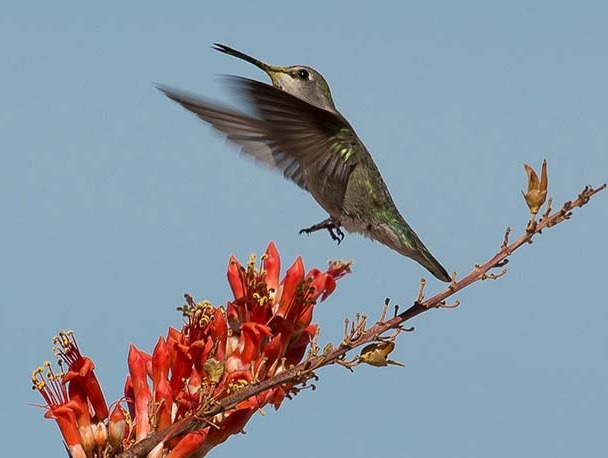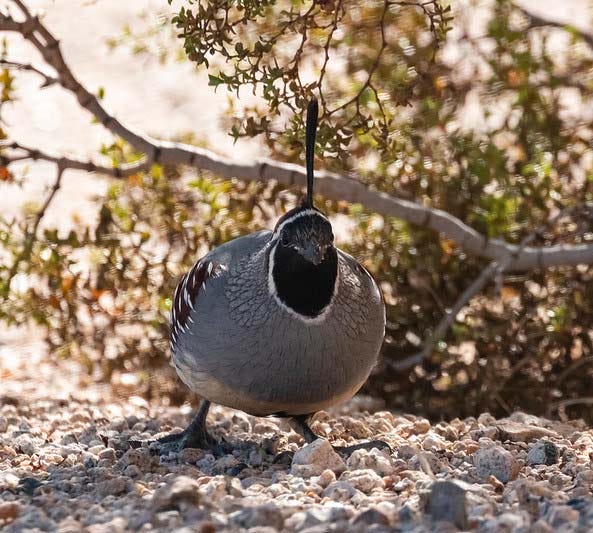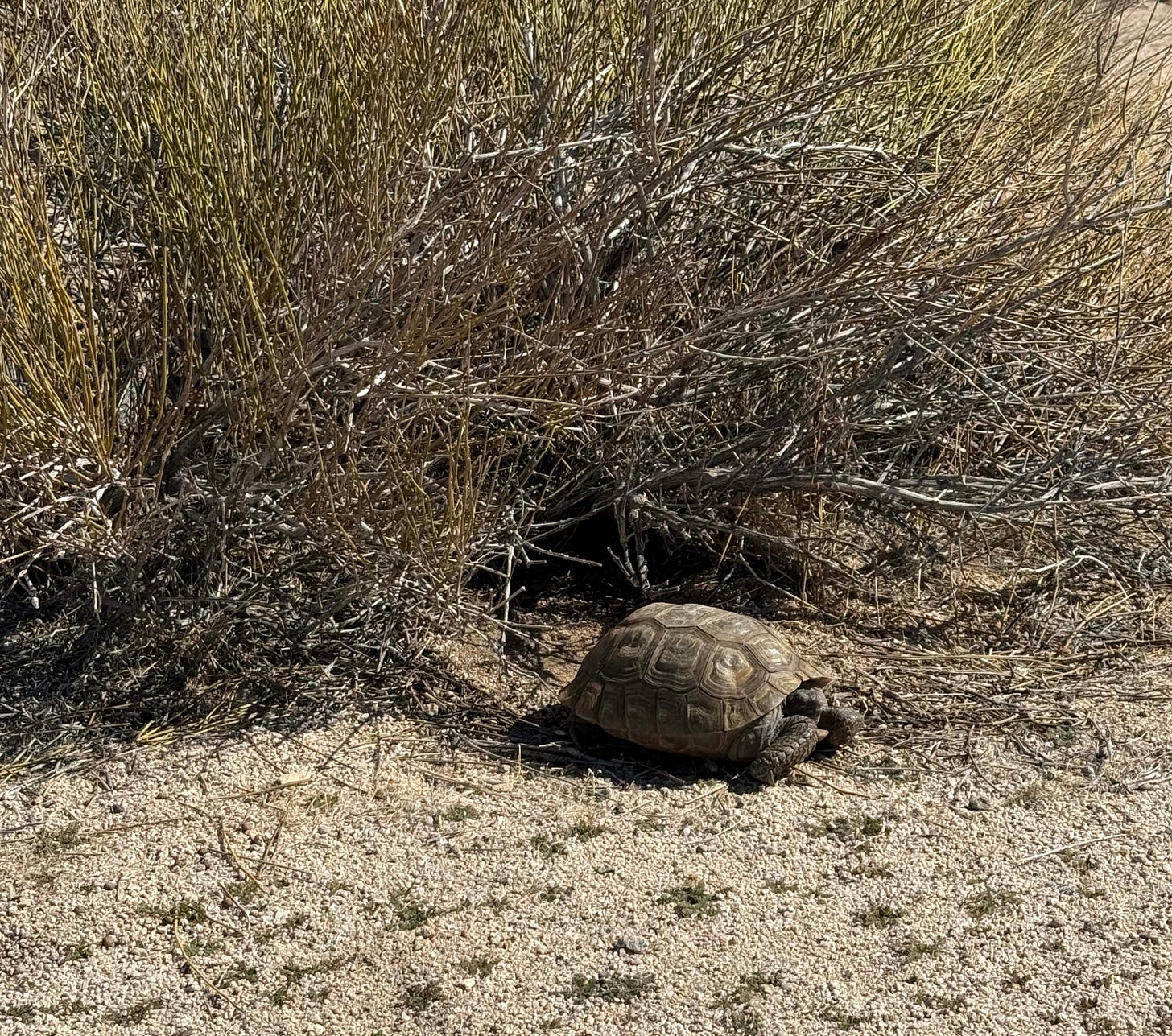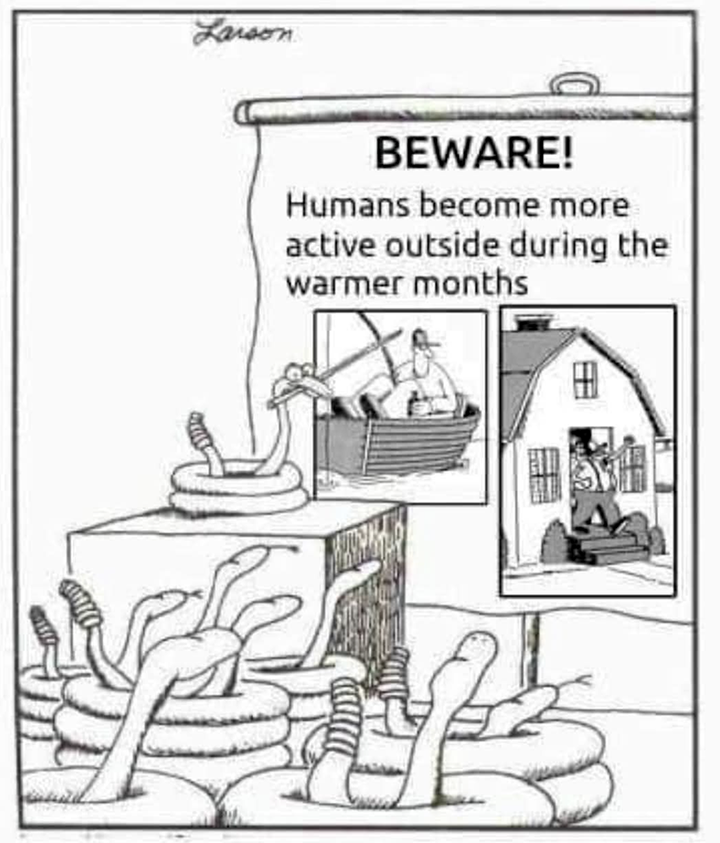WILDLIFE WEDNESDAY: Spring!
What are some of the signs of the season that you’ve seen, smelled, and heard?

While most of us slept, spring arrived last Thursday, March 20, at exactly 2:10 a.m. PST. If you’d been standing on the equator, in say, Kigali, Rawanda, you’d have seen the sun directly overhead at noon, marking the equinox, the moment when day and night balance perfectly. Out here in the Mojave, long before dawn, something shifted.
Some years, spring drifts in, subtle at first—a few extra trills from the black-throated sparrows, verdins whistling, mourning doves getting cozy on the fence. The desert spiny lizards start their territorial push-ups.
This year, no such hesitation. Spring arrived all at once! As I drank my coffee, a cottontail rabbit boldy watched me through the sliding glass door. I know bunnies are the scourge of landscaping, but I miss the numerous rabbits we had around before the 2020 hemorrhagic rabbit virus burned through.
Out at the birdfeeder, the Gambel’s quail were back, finally.
Where do they go in winter? Someone nearby must have better birdseed. I think they return because this is home—the place where they dodged coachwhips and rattlesnakes as chicks, where their feet know the sand and gravel. However snaky, there is no place like home.
When I went for a walk later that morning, happy not to pull my hood over my ears to keep out the wind, I was thrilled to see my first wild desert tortoise of the year. (Frankly, every tortoise spotting is a thrill.) She’d come out of her burrow to warm her shell in the sun and see if there was anything good to eat. Green sprouts dotted the ground here and there, but it doesn’t seem like it will be a good wildflower year. She might have to wait patiently underground for the next rainy year, getting by on scraggly goldfields and, if we’re lucky, desert pincushion.
Yellow blooms cover the creosote, shimmering with bees and the occasional darting Anna’s hummingbird—which especially enjoy the ocotillo in bloom.
Just a few days before, straggling migratory turkey vultures had tumbled through the Basin, trying to ride the intense gusts of spring winds. The massive Joshua trees that line Hwy 62 in Yucca Valley swayed, their white blooms like masses of bells shaking in wind blasts. The Joshua trees are blooming in the national park along the road, but I didn’t see any flowers on trees when I walked a series of circuits around Barker Dam. Maybe at another elevation, but in any case, more blooms than last year.
Great horned owls hoo-hoo at each other in the night, and the roadrunner takes charge on the roof, clacking his beak and keeping an eye out for lizards. An excited visitor in the park told me he’d seen a Komodo dragon on the Hidden Valley Trail—chuckwallas are impressive but not as big enough to tear apart a goat like a Komodo dragon.
The speckled rattlesnake hasn’t curled up by the back door, and I haven’t run across any elegantly spiraled sidewinders warming up and watching for lizards—it’s not quite snake season around here.
The white-crowned sparrows have beefed up to start their epic journey to Alaska and will be leaving soon. I’ll miss them. Migrating songbirds have started to pass through and I’ve caught quick flashes of butterbutts1 and hooded orioles.
Did you notice the sudden onset of spring? What signs of spring have you’ve seen, smelled, and heard? Maybe it’s just a feeling. Maybe it’s just what I’d been wanting. Either way, spring is here.
Leave your thoughts in the comments below. Please note that we do not allow anonymous comments. Please be sure your first and last name is on your profile prior to commenting. Anonymous comments will be deleted.
Feel free to share this article!
We have reached our goal of $5,000 in paid subscriptions! We are very grateful for support from our community. We know that many communities in the Morongo Basin are economically disadvantaged, so our coverage will always be free. However, if you have the means to support our work, we always appreciate upgrades to a paid subscription. Your upgrade helps keep subscriptions free for those who cannot afford to donate.
Note: your subscription/donation will be listed as AHA Projects, the name of our fiscal receiver, on your statement.
Yellow-rumped warblers, of course.






Quails, wind, vultures, wind, mallow, wind, wind, wind.